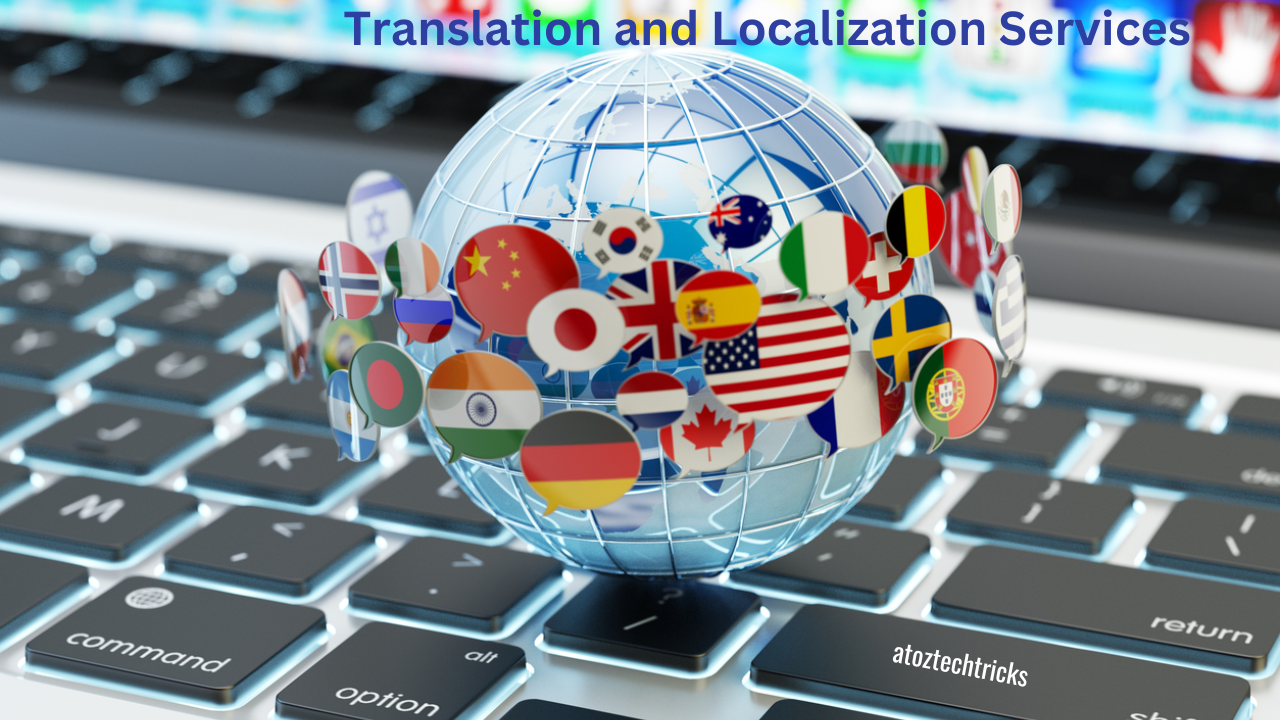Translation and Localization Services: Bridging Cultures and Expanding Markets
In our increasingly globalized world, businesses and organizations are expanding their reach beyond national borders, engaging with diverse audiences across different languages and cultures. This expansion necessitates a robust approach to communication, one that ensures clarity and relevance in every market. This is where translation and localization services come into play. These services are essential for companies aiming to effectively bridge cultural and linguistic gaps, ensuring their messages resonate with audiences around the globe. In this comprehensive guide, we will explore the intricacies of translation and localization services, their importance, the processes involved, and best practices to optimize their impact.
Understanding Translation and Localization
Translation and localization are often used interchangeably, but they represent different aspects of adapting content for diverse markets.
What is Translation?
Translation refers to the process of converting text from one language to another. It involves accurately conveying the meaning, tone, and nuances of the original content in the target language. Translation is crucial for a wide range of documents, including websites, marketing materials, legal documents, and technical manuals. The primary goal is to ensure that the message remains clear and consistent across languages, without losing its original intent.
What is Localization?
Localization, on the other hand, goes beyond mere translation. It involves adapting content to suit the cultural, social, and linguistic preferences of the target audience. Localization considers various elements such as cultural norms, regional idioms, date formats, and even colour symbolism. It ensures that the content feels native and appropriate to the local audience, enhancing user experience and engagement.
In essence, while translation focuses on language accuracy, localization emphasizes cultural relevance and contextual appropriateness.

The Importance of Translation and Localization
Expanding Market Reach
One of the most significant benefits of translation and localization is the ability to reach new markets. By translating and localizing content, businesses can effectively communicate with customers in their native languages, enhancing their chances of entering and succeeding in international markets. This not only opens up new revenue streams but also helps in building a global brand presence.
Enhancing Customer Experience
Localized content improves the overall customer experience by making interactions more intuitive and relevant. When users encounter content that resonates with their cultural and linguistic backgrounds, they are more likely to engage positively with the brand. This can lead to higher customer satisfaction, loyalty, and conversion rates.
Complying with Regulations
In many regions, businesses are required to provide information in the local language to comply with legal and regulatory standards. Localization ensures that companies meet these requirements, avoiding potential legal issues and penalties.
Building Brand Trust
Localized content demonstrates a company’s commitment to understanding and valuing its customers’ cultures. This fosters trust and credibility, which are crucial for establishing long-term relationships with international clients.
Social Media Management: Strategies, Tools, and Best Practices for Success
The Translation Process
The translation process involves several key steps to ensure accuracy and quality. Here’s a detailed look at each stage:
1. Initial Assessment
Before beginning the translation process, it’s essential to assess the content and determine the scope of the project. This includes understanding the type of content, the target audience, and any specific requirements or constraints. This stage often involves discussions between the client and the translation service provider to establish clear objectives and expectations.
2. Content Preparation
Content preparation involves organizing and formatting the source material for translation. This may include converting files into a compatible format, removing any irrelevant information, and ensuring that the content is clear and concise. In some cases, content may need to be adapted to suit different cultural contexts before translation begins.
3. Translation
During the translation phase, professional translators work on converting the text from the source language to the target language. This requires not only linguistic expertise but also a deep understanding of the subject matter. Translators must accurately convey the meaning, tone, and nuances of the original content while considering cultural differences.
4. Editing and Proofreading
Once the translation is complete, the content undergoes editing and proofreading to ensure accuracy and consistency. This stage involves checking for any errors or inconsistencies in the translated text and making necessary corrections. It also includes verifying that the translation adheres to any specific guidelines or preferences set by the client.
5. Quality Assurance
Quality assurance is a crucial step in the translation process. It involves a final review of the translated content to ensure that it meets the required standards of quality and accuracy. This may include additional checks for formatting, language consistency, and adherence to any localization requirements.
6. Delivery and Feedback
After the quality assurance process, the final translated content is delivered to the client. Clients need to provide feedback on the translation to ensure that it meets their expectations and requirements. This feedback can be used to make any necessary revisions and improve the overall quality of the translation.

The Localization Process
Localization involves a more comprehensive approach compared to translation. The localization process typically includes the following steps:
1. Market Research
Effective localization starts with understanding the target market. This involves researching the cultural, social, and linguistic characteristics of the region where the content will be used. Market research helps in identifying local preferences, trends, and potential challenges that may affect the localization process.
2. Content Analysis
Content analysis involves evaluating the source material to determine what needs to be adapted for the target audience. This includes identifying elements that may require localization, such as images, colours, currency, and measurements. It also involves understanding the cultural context in which the content will be received.
3. Adaptation
During the adaptation phase, content is modified to suit the cultural and linguistic preferences of the target audience. This may involve changing idioms, adjusting humour, and incorporating local references. It also includes adapting visual elements, such as images and colours, to align with cultural norms and expectations.
4. Translation
Translation is a key component of localization, but it’s done with a focus on cultural relevance. Translators work to ensure that the translated content not only conveys the original message but also resonates with the local audience. This may involve making adjustments to tone and style to better suit cultural preferences.
5. Localization Testing
Localization testing is an important step to ensure that the localized content functions correctly in the target market. This includes testing software, websites, or applications to verify that all localized elements are displayed correctly and that there are no issues with functionality or usability.
6. Final Review and Approval
Before finalizing the localization project, a thorough review is conducted to ensure that all elements meet the required standards of quality and accuracy. This includes checking for consistency, cultural appropriateness, and any potential errors. Once the review is complete, the localized content is approved and prepared for release.
Virtual Assistant Services: Revolutionizing Modern Work Environments
Best Practices for Translation and Localization
To ensure the success of translation and localization projects, it’s important to follow best practices. Here are some key practices to consider:
1. Work with Professional Translators and Localizers
Engaging professional translators and localizers with expertise in the relevant languages and cultures is crucial. They bring linguistic and cultural knowledge that ensures high-quality and accurate translations and localizations.
2. Maintain Consistency
Consistency is essential in translation and localization projects. Establishing and adhering to style guides, glossaries, and terminology databases helps maintain uniformity across different languages and content types.
3. Use Technology Wisely
Translation and localization technologies, such as translation memory tools and localization platforms, can streamline the process and improve efficiency. These tools help in managing large volumes of content and ensuring consistency across projects.
4. Prioritize Cultural Sensitivity
Cultural sensitivity is critical in localization. Understanding and respecting cultural differences helps avoid misunderstandings and ensures that content is well-received by the target audience. This includes being mindful of cultural norms, values, and preferences.
5. Test and Review Thoroughly
Thorough testing and review processes are essential to identify and resolve any issues before content is released. This includes checking for linguistic accuracy, functional correctness, and cultural appropriateness.
6. Provide Clear Instructions
Clear instructions and guidelines help translators and localizers understand the client’s expectations and requirements. Providing detailed briefs, style guides, and context can improve the quality of the final output.
7. Monitor and Evaluate
After releasing translated and localized content, it’s important to monitor its performance and gather feedback from the target audience. This helps in identifying any issues and making improvements for future projects.

Translation and localization services play a vital role in today’s globalized business environment. By effectively bridging linguistic and cultural gaps, these services enable companies to expand their market reach, enhance customer experience, and build brand trust. Understanding the differences between translation and localization, and following best practices in each process, ensures that content is not only accurate but also culturally relevant and engaging. As businesses continue to engage with diverse audiences around the world, investing in high-quality translation and localization services will be key to their international success.




Post Comment